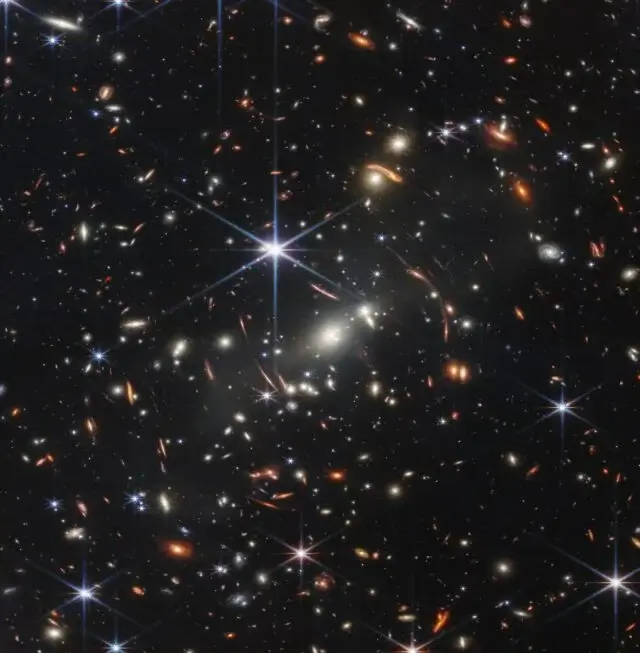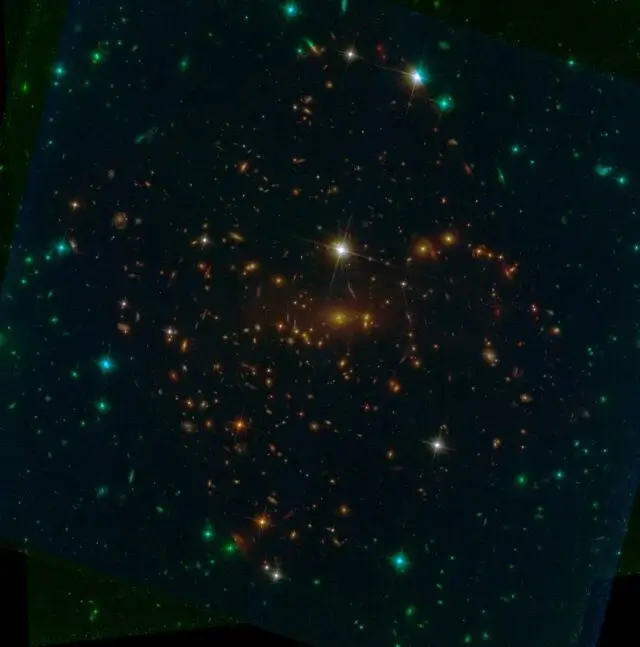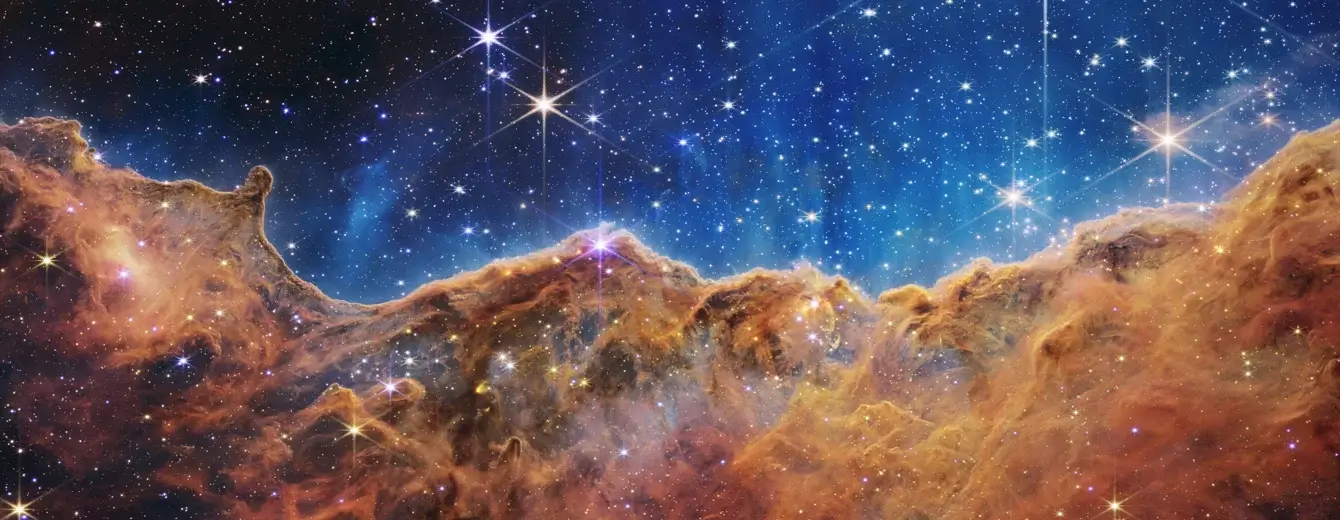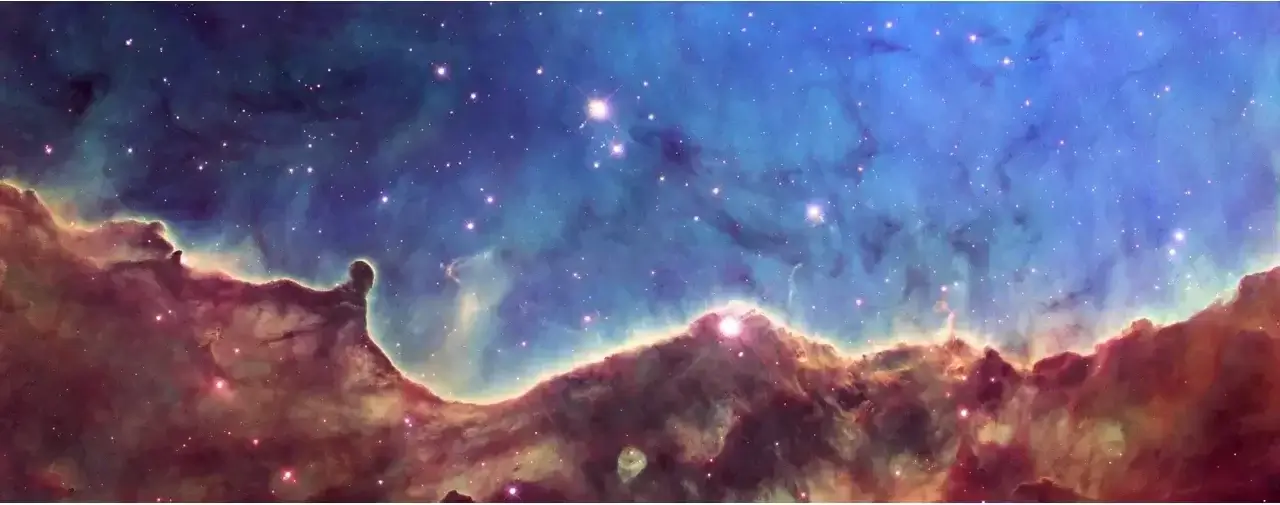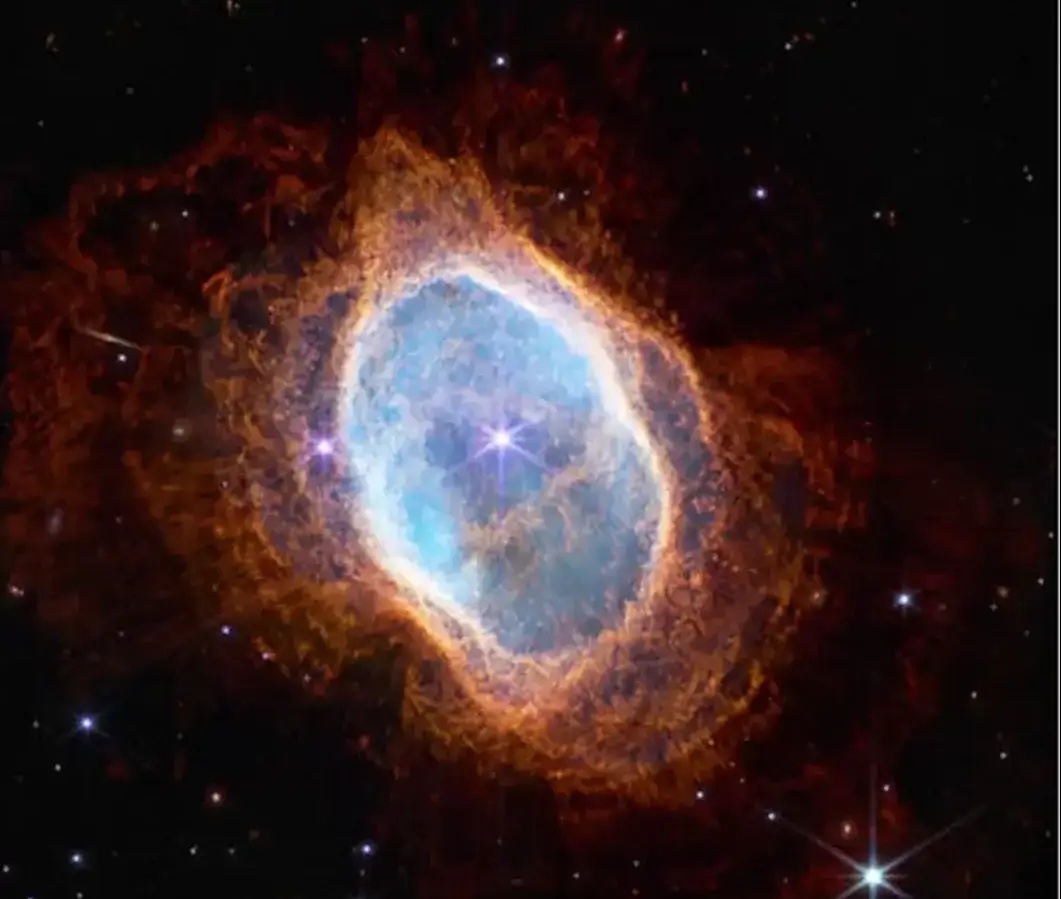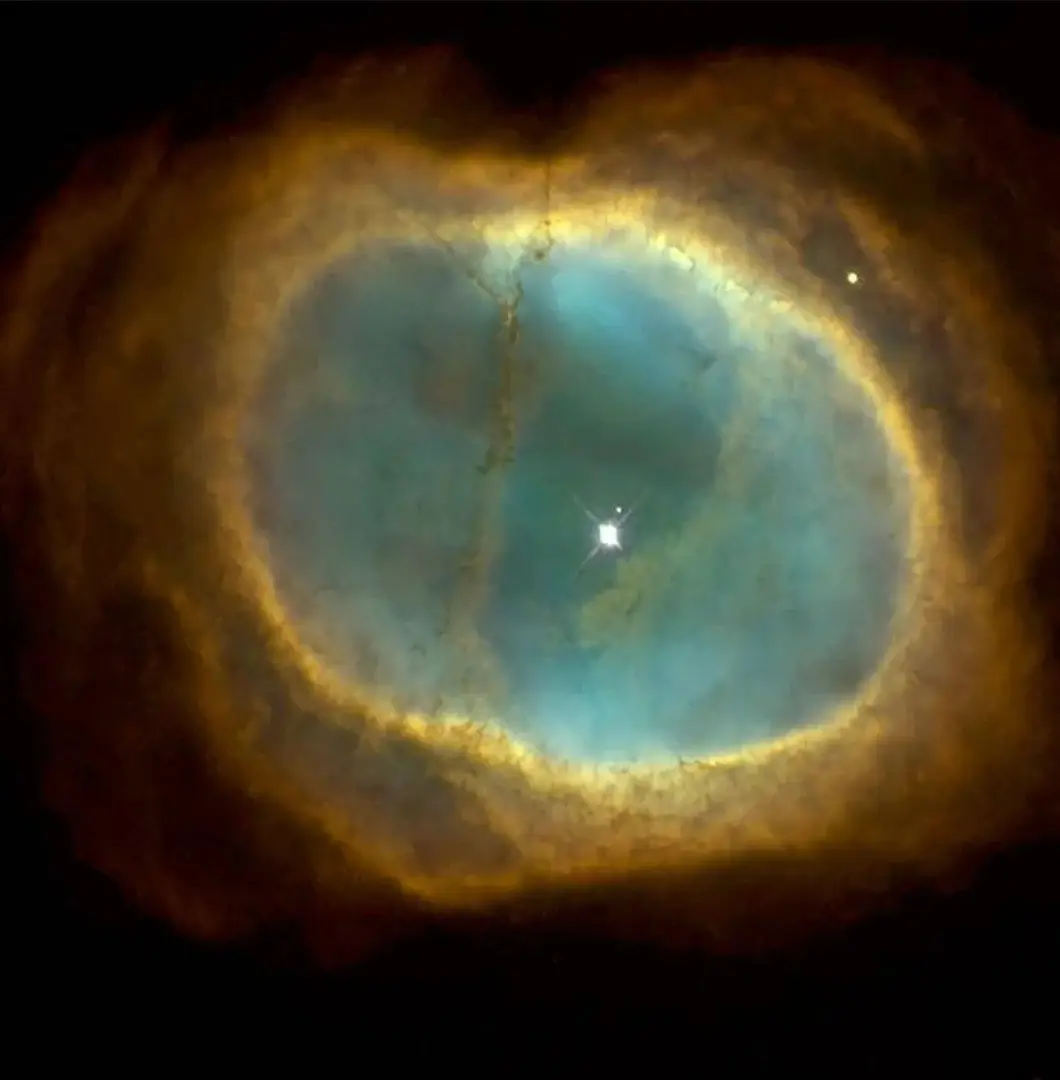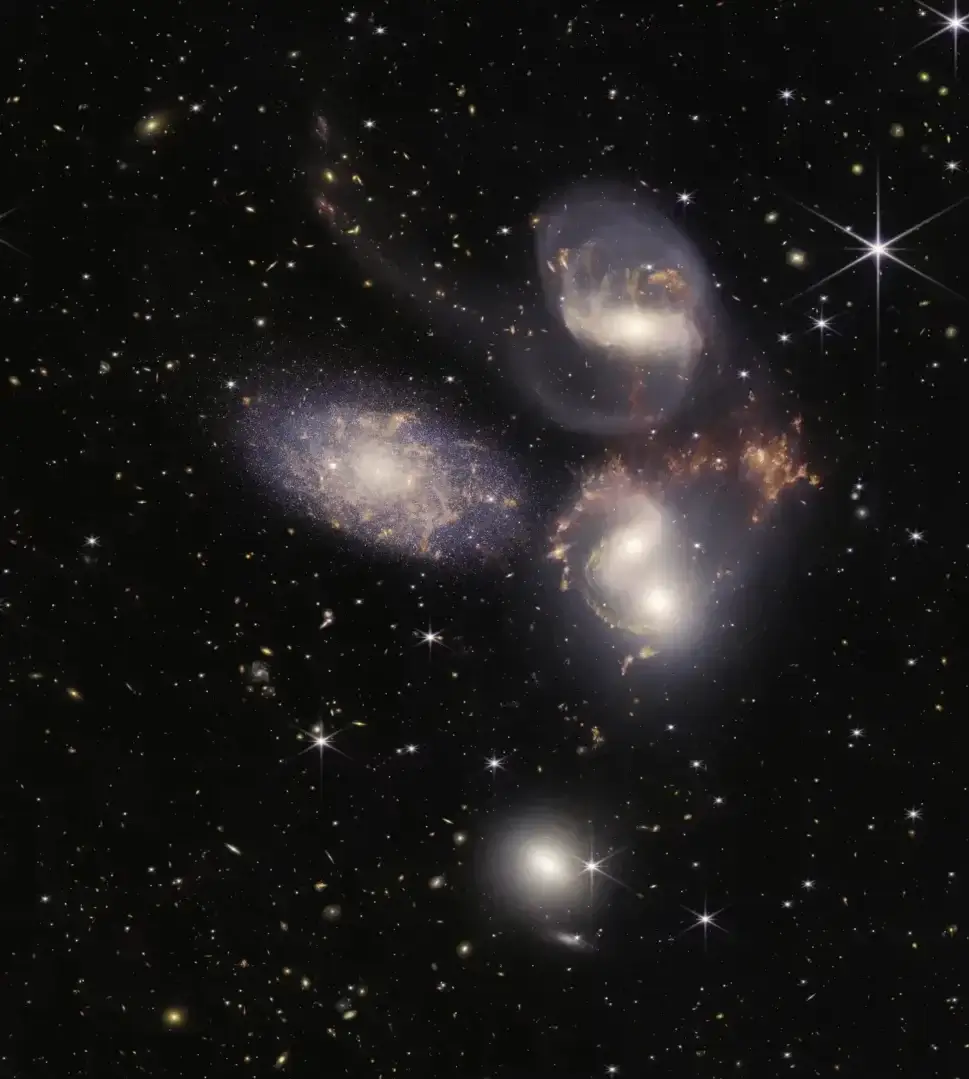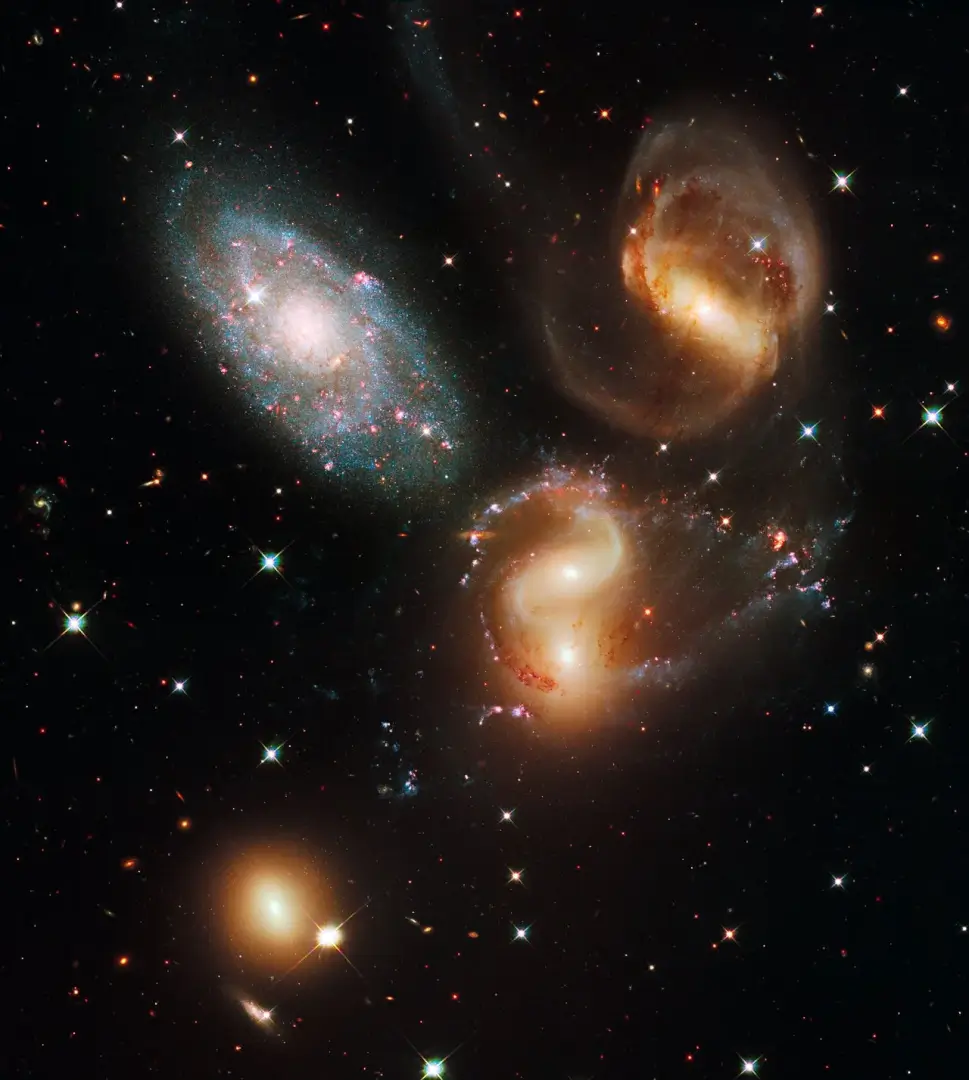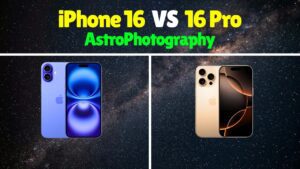
James Webb space telescope launched by NASA is the most expensive 10 billion dollar telescope. NASA released the first images taken by this telescope. In this article, we will look at the photos taken by the Webb telescope.
NASA has released five images taken by Webb. Let’s see the details of these images and how they are different from the Hubble telescope.
This first image is of “Galaxy cluster SMACS 073”
The one image you can see is from the Hubble telescope. When you see the same image taken by Webb, the image is much brighter & sharper. When Hubble pointed to this region, it was expected that it will not see anything in this region. But as it focused lots of galaxies started popping out. It is almost 4.5 billion light years away. For Hubble, it took 2-3 weeks to take this image. For the Webb telescope, it took only 12.5 hours & the image is much brighter, sharper & has more details. So Webb is much faster and we will be able to see such beautiful images of space very often.
In this image, you can see the different colored images of the stars and galaxies. The redder the galaxy or star looks, the farther it is.
If you see these parts where there is distortion, it is actually an image of a galaxy. This distortion of the image is happening because of gravitational lensing. We all know the gravity of a massive object is very intense and it can warp space-time. When light is coming from distant objects passing nearby a big massive object with intense gravity, then the gravitational force of that massive object will bend that light. Because of that image of the object will look distorted.
In the below image, the white part is the cluster of galaxies which is at the front & behind this cluster, there is another galaxy. When the light comes from the galaxy which is behind. That light is bent by the galaxy cluster at the front. So because of this, you see the distorted image of the second galaxy (Distortion 1 in the image). The same kind of distortion you see here (Distortion 2 in the image) & in this region as well (Distortion 3 in the image). Most of the distorted images you see in this circular region are probably of the same galaxy.
The distortion in this part is because of this white galaxy or celestial object. If you see any distorted star in this image just find the bigger nearby object to it. Most probably the distortion is because of the gravitational lensing effect of that object.
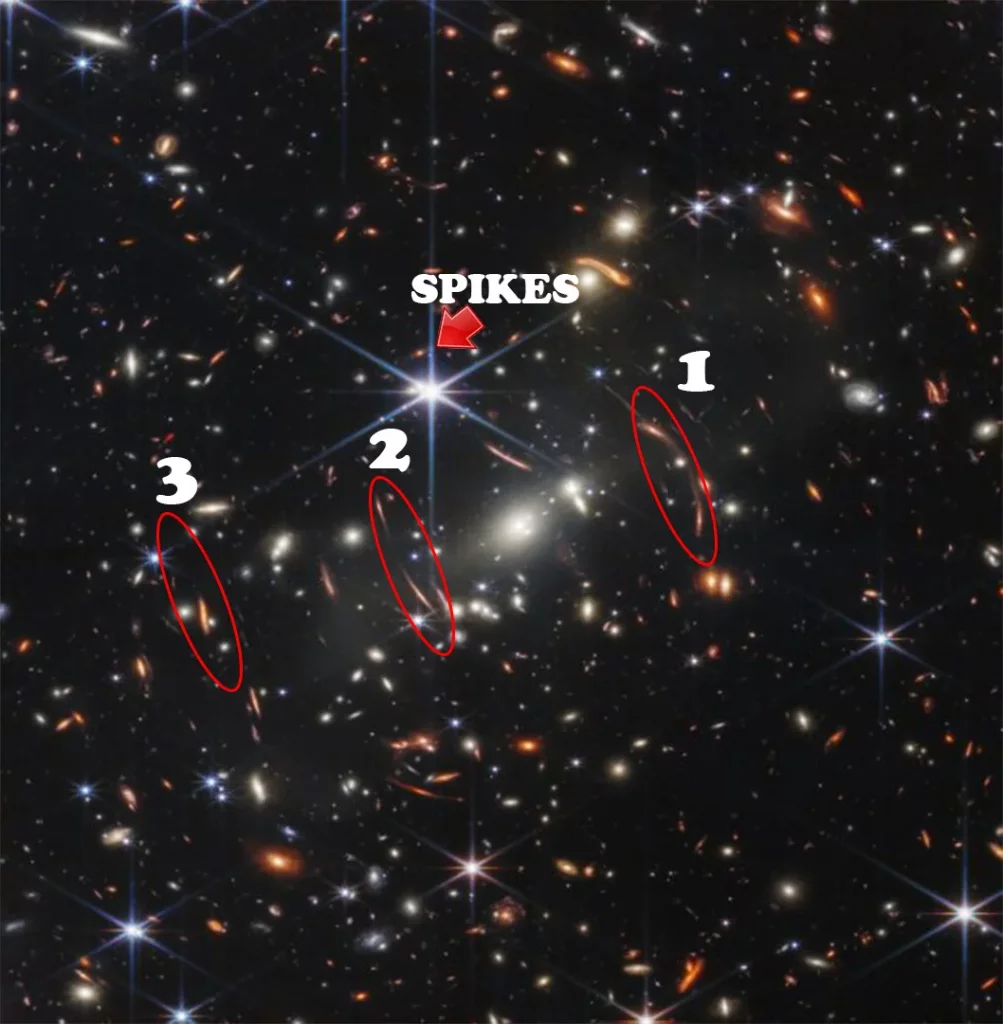
Another thing you should notice in this image is the spikes of these bright objects. These bright objects look too bright and the spikes are the diffraction spikes. The Webb is Hexagonal in shape. It receives the light and then transfers it to the secondary mirror. From there, it is analyzed with a scientific instrument.
The 6 spikes are because of the hexagonal shape of the Webb mirror. You can see the horizontal spike in the picture. This is because the secondary mirror has struts or supports. Because of those struts, you can see the Horizontal spike. If you compare it with the Hubble pictures, they had only four spikes(Check the above image). From this, you will be able to tell which photo is from the Webb or any other telescope. If it has 6 diffraction spikes then it is from Webb. If not, then it is from Hubble or another telescope.
The second image is of “Carina Nebula”
This Nebula is 7500 light years away. In this image, you can see the top blue part with the stars and the bottom part in red-brown color. These two parts are separated by the cliff-like pattern formed by the gas and Dust. This cliff-like pattern or the border is because of the stars in the top region. The intense ultraviolet radiation and stellar winds from extremely massive, hot, young stars located above the area are emitting high-energy radiations and because of this, the Nebula material is slowly eroding away and forming this Cliff pattern.
Webb mainly can see infrared light. So you can also see the stars and galaxies forming in the dust clouds in the infra-red version of the same image.
The third image is of the “Southern Ring Nebula“
This is also known as the dying star & it is 2500 light years away. It is a planetary Nebula. The planetary nebula is the stage of a star just before it becomes the white dwarf. Our sun will die in a similar way. First, it will expand to become a red giant then it will become a planetary Nebula, and then a white dwarf.
The Webb has taken two images of this Nebula. On the left side, you see an image from Webb’s near-infrared camera. On the right, you see an image from Webb’s mid-infrared camera.
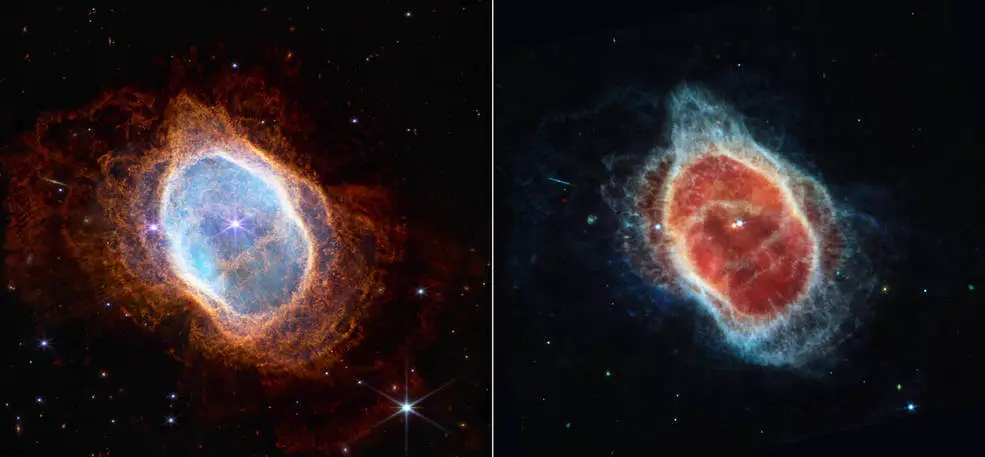
The outermost shell in the above image is released the earliest. The innermost is the one that was released the most recently. The outermost reddish shell is of nitrogen. The inner section consists of Oxygen and mostly helium.
If you look at the image on the right carefully. The second image revealed that it is not the one star dying. It is actually two stars dying and they were rotating each other. Because of this, the nebula has an asymmetrical pattern. And usually, the brighter star influences the shape of this Nebula. This Nebula will help scientists to know more about the last stages of a star’s life. Our sun will die similar way but it will die alone in about 5 billion years.
The fourth image is of “Stephan’s Quintet“
In this image, you can see the five galaxies in the cosmic dance. Out of the five, the four galaxies are close to each other. The fifth one is in the foreground and is 40 million light years away from the earth and the other four are 290 million light years away from the earth. This part of the cosmos is rare. As usually, galaxies are billions of light years away from each other. Compared to that, these galaxies are very close to each other and also to the earth.
This image is constructed by merging 1000 images. Stephen’s quintet is the front row seat for scientists witnessing the merging and interactions between galaxies. It will tell us how the evolution of galaxies happened in the early universe. Stephan’s Quintet is in the constellation Pegasus. You can see it with your telescope as well.
The fifth image is of the “WASP -96b“
This is an exo-planet and it is 1150 light years away. Its mass is half of Jupiter and has a diameter 1.2 times greater than it. It is a hot planet with a temperature of more than 540 degrees. WASP -96b orbits around the sun like a star and its distance from that star is 1/9th of the distance between the sun & mercury. It takes about 3.5 earth days to complete one rotation around its star.

When Webb observed this planet it found some spectrums which showed the presence of water vapors in its atmosphere. Researchers can use the spectrum to measure the amount of water vapor in the atmosphere. They will also find various elements like carbon and oxygen, and estimate the temperature of the atmosphere. From this information, they can know what exactly this planet is made of and when exactly it was formed.
Webb observed this planet for about 6.5 hours. These continuous 6+ hours of exposures are possible only because the Webb is at Lagrange point 2 (L2). This is the biggest advantage Webb has over Hubble. As Hubble rotates around the earth, its view gets blocked by the earth after some time. So, continuous exposure to any object with Hubble is not possible.
We hope you understood the details of super awesome images taken by the Webb telescope. The next image Webb will take is of Jupiter. NASA will release it next week. It will be exciting to see what details of Jupiter Webb will see. We will analyze that images as well. So, if you liked this analysis, share it with someone and check out our website & YouTube Channel for more astronomy & stargazing content.
